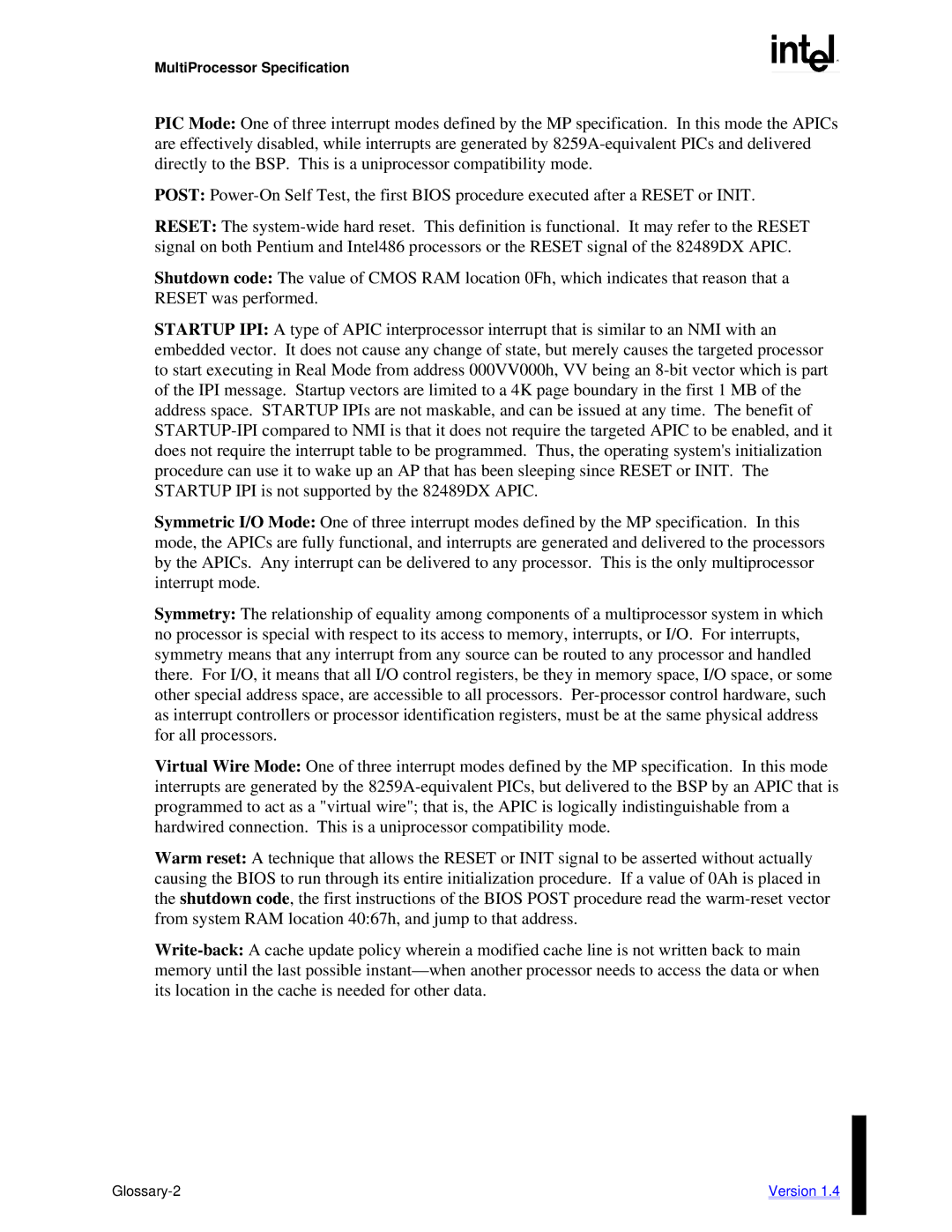
MultiProcessor Specification
PIC Mode: One of three interrupt modes defined by the MP specification. In this mode the APICs are effectively disabled, while interrupts are generated by
POST:
RESET: The
Shutdown code: The value of CMOS RAM location 0Fh, which indicates that reason that a RESET was performed.
STARTUP IPI: A type of APIC interprocessor interrupt that is similar to an NMI with an embedded vector. It does not cause any change of state, but merely causes the targeted processor to start executing in Real Mode from address 000VV000h, VV being an
Symmetric I/O Mode: One of three interrupt modes defined by the MP specification. In this mode, the APICs are fully functional, and interrupts are generated and delivered to the processors by the APICs. Any interrupt can be delivered to any processor. This is the only multiprocessor interrupt mode.
Symmetry: The relationship of equality among components of a multiprocessor system in which no processor is special with respect to its access to memory, interrupts, or I/O. For interrupts, symmetry means that any interrupt from any source can be routed to any processor and handled there. For I/O, it means that all I/O control registers, be they in memory space, I/O space, or some other special address space, are accessible to all processors.
Virtual Wire Mode: One of three interrupt modes defined by the MP specification. In this mode interrupts are generated by the
Warm reset: A technique that allows the RESET or INIT signal to be asserted without actually causing the BIOS to run through its entire initialization procedure. If a value of 0Ah is placed in the shutdown code, the first instructions of the BIOS POST procedure read the
| Version 1.4 |
